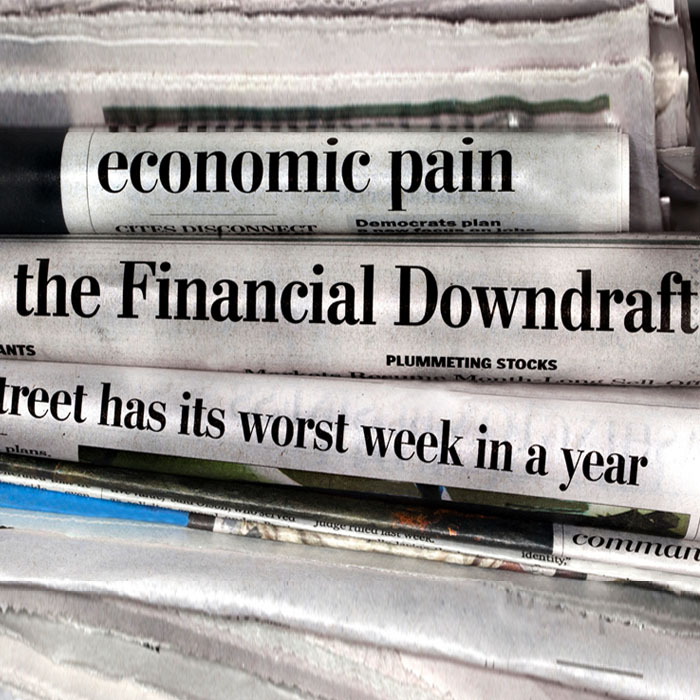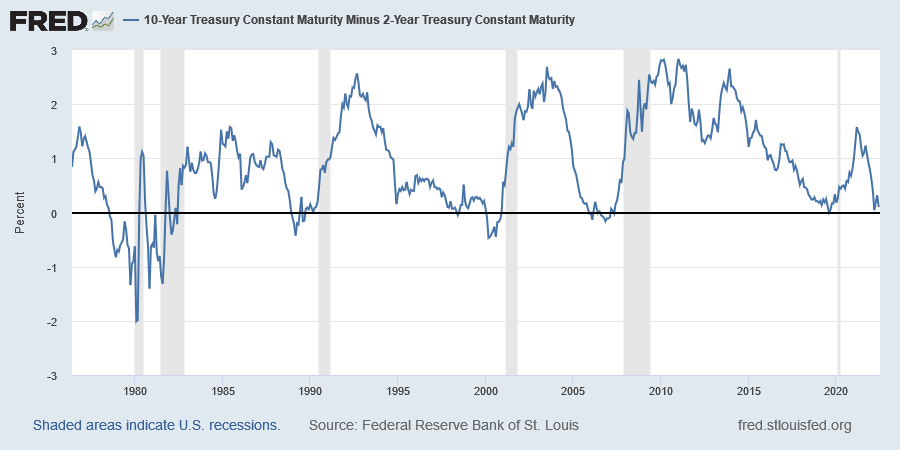Do I Need to Prepare My Portfolio for a Recession?
Jun 29 2022 | Back to Blog List
This post feels kind of like a sequel to our last post on inflation, but it reflects the very real questions we’ve been receiving in recent weeks.
 Is there a recession coming?
Is there a recession coming?
Are we in one already?
What should we do to prepare our portfolio?
While we believe in a steady, diversified approach to investing that focuses on long-term objectives rather than timing the market’s tumbles, we understand your anxiety.
A recession is a scary prospect for investors, business owners, and employees alike. They can be serious economic disruptions that alter people’s lives and livelihoods; recessions can also mean a serious hit to your portfolio.
Whether you’ve lived through one recession or ten, it’s easy to get emotional and batten down the hatches when you see a storm on the horizon. But that’s rarely your best course of action.
Let’s talk through our reasoning a bit.
What are the current odds of a recession?
Like the answer to most things in the financial world, the probability of a recession depends upon whom you ask. The Wall Street Journal (WSJ) alluded to this in a June 15th article that noted even bank executives, who spend their days immersed in financial data, “don’t agree on what they see.”
JPMorgan Chase & Co. CEO Jamie Dimon said earlier this summer that there is a “hurricane right out there down the road coming our way. We just don’t know if it’s a minor one or superstorm Sandy.” Morgan Stanley CEO James Gorman, meanwhile, offered that the likelihood of a U.S. recession is currently around 50 percent, but that he’s feeling “pretty relaxed” about any impact it might have.**
With insights like those, who needs financial advisers like us?
The perplexing thing about forecasting our future is that many economic signals suggest things, generally speaking, are still good for most Americans. Unemployment is near record lows, wages continue to rise and industrial production is staying relatively strong. Even with inflation at a 40-year high, consumers are by and large still spending, although rate increases by the Federal Reserve are beginning to cool off bigger-ticket purchases like real estate, automobiles, and appliances.
At the same time, there are so many headwinds facing U.S. companies and consumers, it’s almost impossible to imagine the economy going any other way than down. Rising gas prices are now pushing past $5 a gallon; supply chain difficulties continue to cause bottlenecks in the economy; and a chronic shortage of workers is making it hard for companies to maintain revenues and productivity.
At its June FOMC meeting, the Federal Reserve raised its benchmark interest rate by 0.75% in a bid to tame inflation, increasing the cost of borrowing for everyone from corporations to car buyers. More hikes are expected over the coming year, pushing monetary policy toward territory we haven’t visited since before 2008.
With everything on the rise, it’s hard to see how businesses and households can keep up. But that doesn’t mean a recession is inevitable, or that it will be a prolonged affair like the Early 1980s Recession (16 months) or the Great Recession of 2008 (19 months).
Can’t we predict a recession with the yield curve (or X)?
Many investors have found preferred metrics for predicting recessions, ostensibly so you can move your investments to safer waters before things get choppy.
One of the most popular crystal balls in the financial world is the yield curve inversion. That’s when the yield (or interest paid) on a long-term, 10-year US Treasury note drops below the yield on a shorter-term treasury, like a 2-year note or 1-year treasury bill.
Many cite a yield curve inversion as proof that a storm is coming because it shows that investors are willing to accept a lower interest rate for longer-term safety while also seeing greater financial risk (and thus demanding higher yields) in the coming months.
Here’s a look at the spread between the 10-year note and the 2-year note; a negative value indicates an inversion of the two rates. The curve inverted briefly earlier this spring before bouncing back to hover just above 0.**

Considering that the market quickly incorporates all available information into its pricing, this can seem like a good indicator to watch—and academic research confirms its ability as a general future signal. But it’s not foolproof, and it’s certainly not enough to build your portfolio strategy around.
As the yield curve was nearing inversion back in March, the WSJ's James Mackintosh wrote, “It is true that before every recession the curve inverted. But a warning that comes between a year and three years before a recession—even ignoring the 1965 and 1998 false alarms—is hard for an investor to act on. It is hard to stick to bearish convictions if stocks keep going up for years, and you’re missing out.”
How can I protect my portfolio from the next recession?
The fact is everyone from Mr. Dimon to our own David Ernst are waiting to see how the economy shakes out in the months ahead. A recession may very well be headed our way over the next few years, but we won’t know until we’re deep in it or even past it.
As we’ve said before, making emotional decisions about your money and reacting to short-term financial conditions almost always results in poorer outcomes. Our foundation of evidence-based investing takes a long-term approach to your portfolio. Research and data show us that if you build a high-quality, diversified portfolio, these assets can help ride out market volatility and be ready to grow again as the economy recovers.
Even if a recession hits and some of your holdings take a tumble, other pieces of your diversified and optimally allocated portfolio may hold steady, or potentially increase in value. By maintaining exposures across multiple asset types, classes, and sectors, it's possible to minimize risk and capture returns where others have failed to look.
Let the financial press, the Wall Street brokers, and Reddit commenters search frantically for the next "great investment idea"—you’ve got a better plan and better things to do. If you still need a solid financial plan that looks to the future, give us a call today and let’s grow together.
**As of this writing (6/28/2022)
The commentary on this blog reflects the personal opinions, viewpoints, and analyses of Cedar Point Capital Partners (CPCP) employees providing such comments and should not be regarded as a description of advisory services provided by CPCP or performance returns of any CPCP client. The views reflected in the commentary are subject to change at any time without notice. Nothing on this blog constitutes investment advice, performance data or any recommendation that any particular security, portfolio of securities, transaction, or investment strategy is suitable for any specific person. Any mention of a particular security and related performance data is not a recommendation to buy or sell that security. Cedar Point Capital Partners manages its clients’ accounts using a variety of investment techniques and strategies, which are not necessarily discussed in the commentary. Investments in securities involve the risk of loss. Past performance is no guarantee of future results.